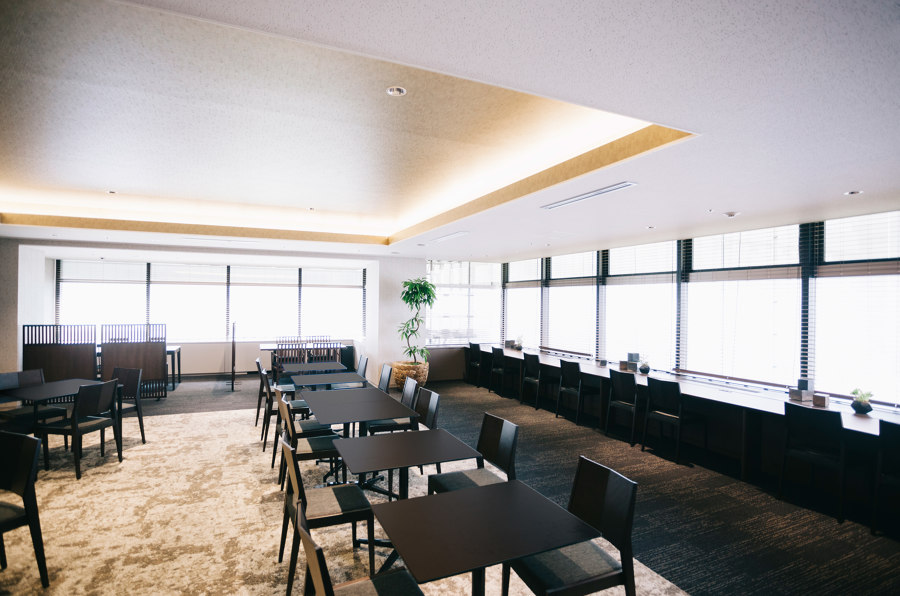Staying on top of the curve with MDF by Unilin
Brand story by Emma Moore
Oostrozebeke, Belgium
16.05.22
With improvements to endurance, resistance and design adaptability, the latest medium density fireboards, once only a budget-friendly option, are giving natural materials a run for their money.
Unilin’s Decorative Compact MDF is strong and wear-resistant, and comes in an array of surface colours and textures, making it an attractive and budget-friendly material for interior features
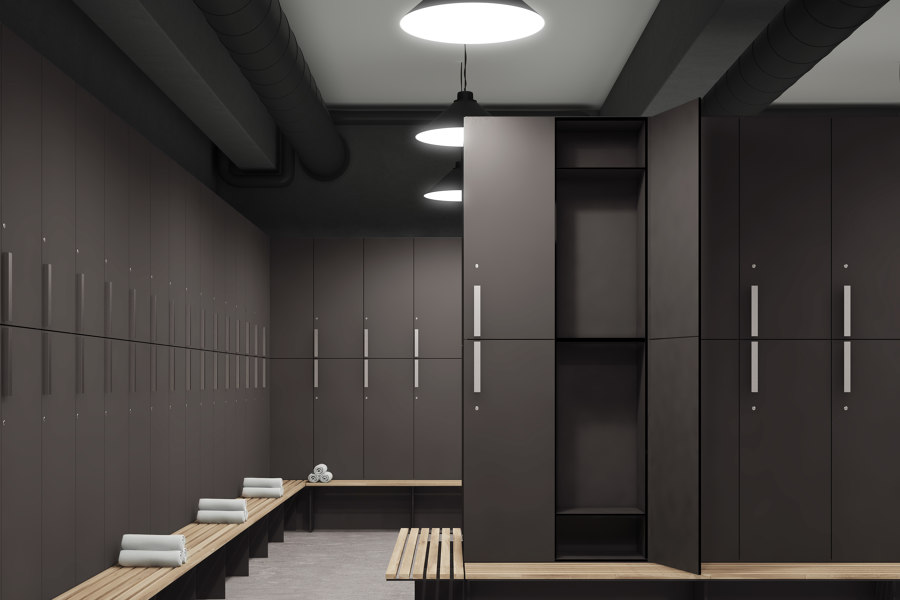
Unilin’s Decorative Compact MDF is strong and wear-resistant, and comes in an array of surface colours and textures, making it an attractive and budget-friendly material for interior features
×In a world where our understanding of what makes something luxury is being turned on its head, the once humble construction material, MDF, is coming off pretty well. When it comes specifically to the realm of design and architecture, what is now considered luxurious is not so much the shiny, rare resource, but the thoughtfully and sustainably produced. It’s defined not by carat or lustre, but by circularity, durability and adaptability. In the right hands, humble can become noble.
The features of the new MDF allow it to be used in a creative way. Supporting curved lines and bringing colour or textural accents, it is a realistic alternative to solid woods and stone
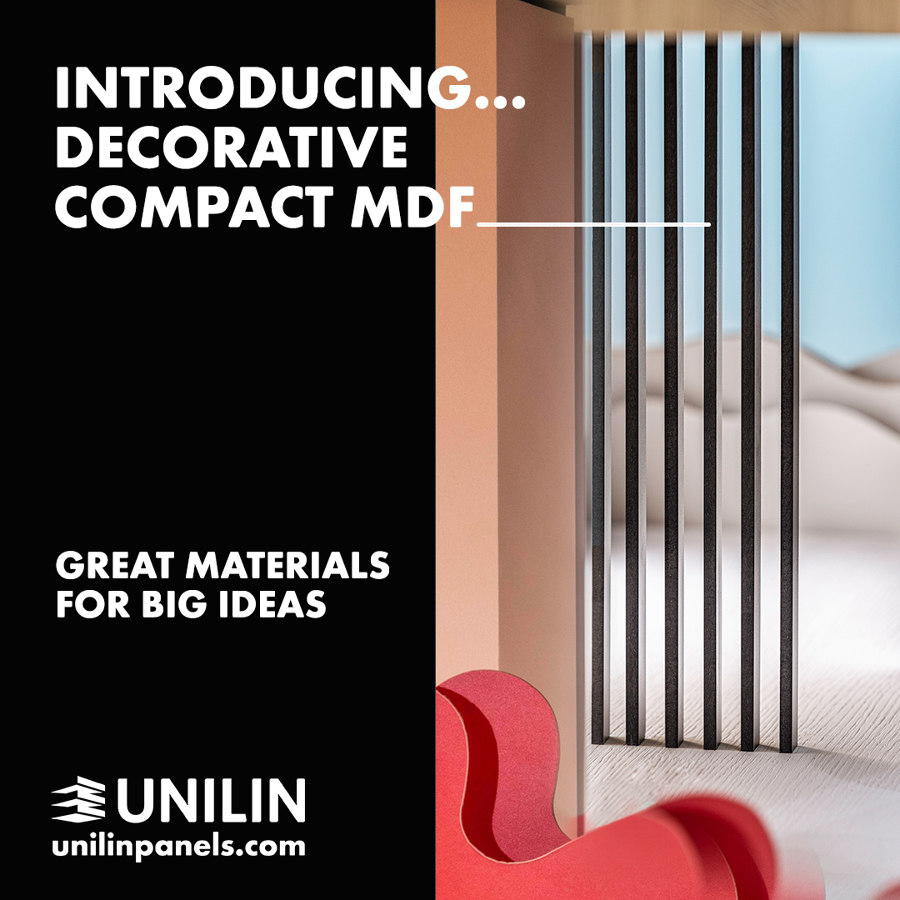
The features of the new MDF allow it to be used in a creative way. Supporting curved lines and bringing colour or textural accents, it is a realistic alternative to solid woods and stone
×Circular by nature
Conceived early in the 20th century as a constructive way to use wood chip waste, MDF is, by its nature, a sustainable product, and what made it practical and budget-friendly when it came to prominence in the 1960s has become its elevating virtue today. Add in technical improvements to its workability, endurance, moisture-resistance and emissions safety, alongside its visual and sensorial appeal, and it is no wonder that interior architects are increasingly exploiting its potential to form sculptural furniture and fixtures, feature cabinetry and stylish kitchen and bathroom fittings.
'We focus on the long term trends, less on the short term trends as our collection runs for at least two years to guarantee constancy for the designer and interior builder'
Unilin Division Panels is one such manufacturer whose continuous evolution of the composite boards is drawing in building and design professionals. The Belgian brand has been reconfiguring natural waste into panels for construction since the 1960s, when it was loam, a by-product of the flax industry, that was the waste. Since the decline of this resource, waste wood (recovered wood, waste from the wood industry and thinned wood from sustainable forestry and verge management) has been the principle raw material and over time the make-up and finish of the substrate and surfaces have developed and diversified, so that there is now considerable choice to be had.
The Decorative Compact MDF comes in large panels and suits a variety of applications, from the building of office furniture to changing room features such as locker doors
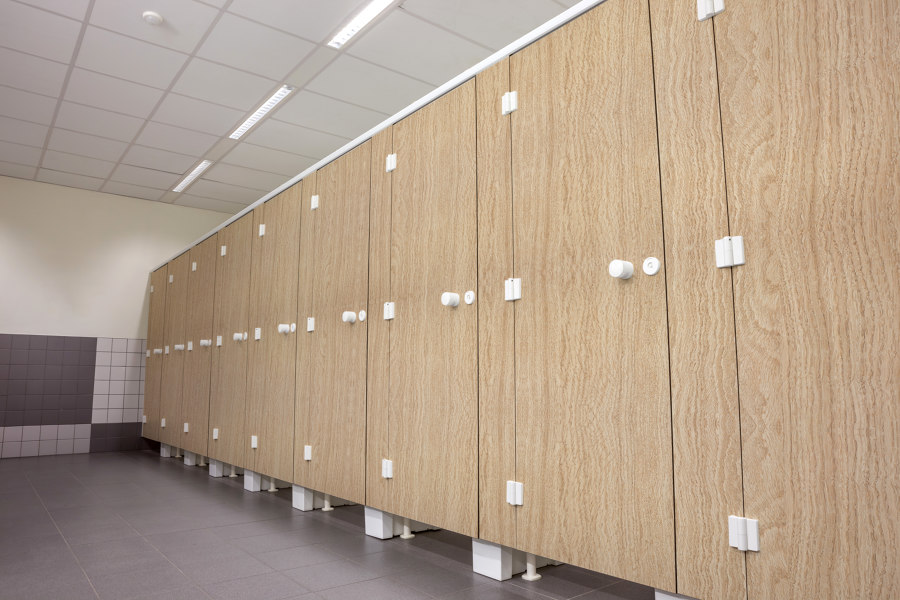
The Decorative Compact MDF comes in large panels and suits a variety of applications, from the building of office furniture to changing room features such as locker doors
×A valid alternative to natural wood and stone
The latest addition to the portfolio is Fibromax Compact MR Black, an exceptionally strong and moisture-resistant compact MDF and, now, 80 decorative melamine surfaces have been developed to finish the high-density black core which can be left exposed at the edges given its resistance to wear and moisture. 'Melamine faced board is in general a budget-friendly, maintenance friendly and for sure sustainable alternative to real materials such as stones and woods,' explains Ann De Blanck, product manager of Decorative panels. 'Decorative Compact MDF is very strong and easy-to-process with standard tooling and the panels have a conveniently large format (2800x2070mm).' These attributes make them ideal for furniture and fittings that will be used intensively, such as changing room lockers.
The substrate has a high density and black core meaning the edges can be left unfinished, and since the core is moisture-resistant it is ideal for use in humid environments such as sanitary areas
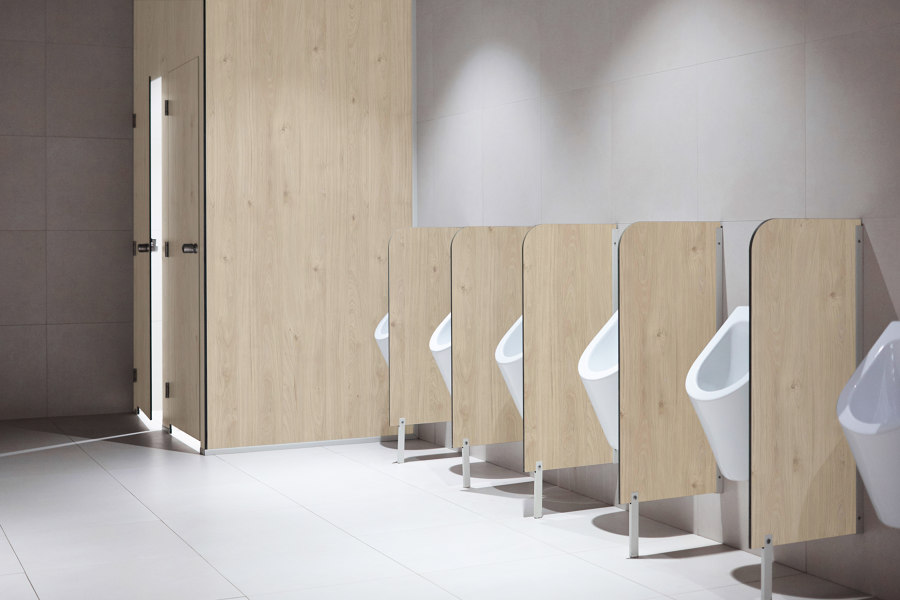
The substrate has a high density and black core meaning the edges can be left unfinished, and since the core is moisture-resistant it is ideal for use in humid environments such as sanitary areas
×Tracking the trends
The new decorative surfaces have been painstakingly researched and developed, initially by tracking the more enduring interior trends at fairs, through magazines and social media and even through research forays in fashion and the car industry where material trends often take root. 'We focus on the long term trends, less on the short term trends as our collection runs for at least two years to guarantee constancy for the designer and interior builder,' explains De Blanck. 'The second step is to search for the original material, visiting wood stores or fabric stores in order to find the perfect piece of wood, stone or textile. The original can in some cases be too outspoken or too hard, that’s why we sometimes adapt them and make them even better. Choosing the perfect colour is, of course, key and the last step is surface finish development as this strengthens the look but especially the touch. We want to create a design that looks and feels as the real material.'
Available in different thicknesses and over 80 designs, the Compact MDF offers interior architects a vast palette of decorative finishes that will last, while not breaking the budget
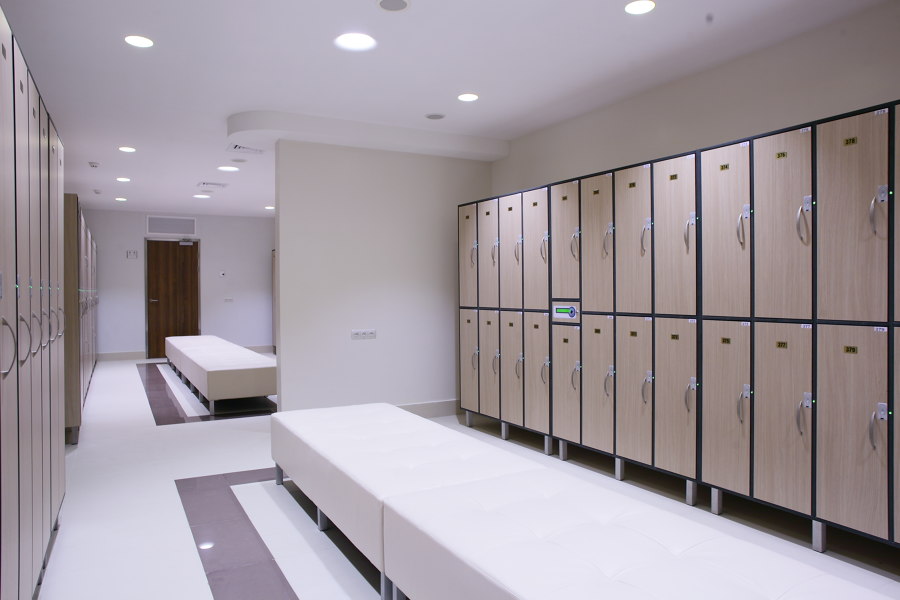
Available in different thicknesses and over 80 designs, the Compact MDF offers interior architects a vast palette of decorative finishes that will last, while not breaking the budget
×The emphasis on the sensorial is an important development in the design of MDFs. We have grown to expect linear and utilitarian from this material, but warm and inviting is a new string to its bow. The possibility to create curvilinear shapes from the compact panels combined with improved tactility and colour in the finish means it can hold its own in modern interiors and be there to answer the call in the industry at large for more cosseting environments.
© Architonic




